Fire triangles are a useful way of understanding how fires ignite, thrive and sustain. They cover the three elements that are essential for fires to exist and survive. In this handy guide, we will explain what those 3 fire triangle elements are, the role they play and why fires cannot survive without them too.
As local experts in fire damage restoration services and smoke damage restoration, we deal with a lot of situations where fires have occurred and help to restore properties afterwards. We deal with the aftermath of domestic fires and commercial fires helping people to recover from the devastation a fire can cause.
Regarding the 3 elements of fire triangles, which she will sometimes he referred to as a combustion triangle, here is more detail to help explain them simply, with useful diagrams.
3 Fire Triangle Elements
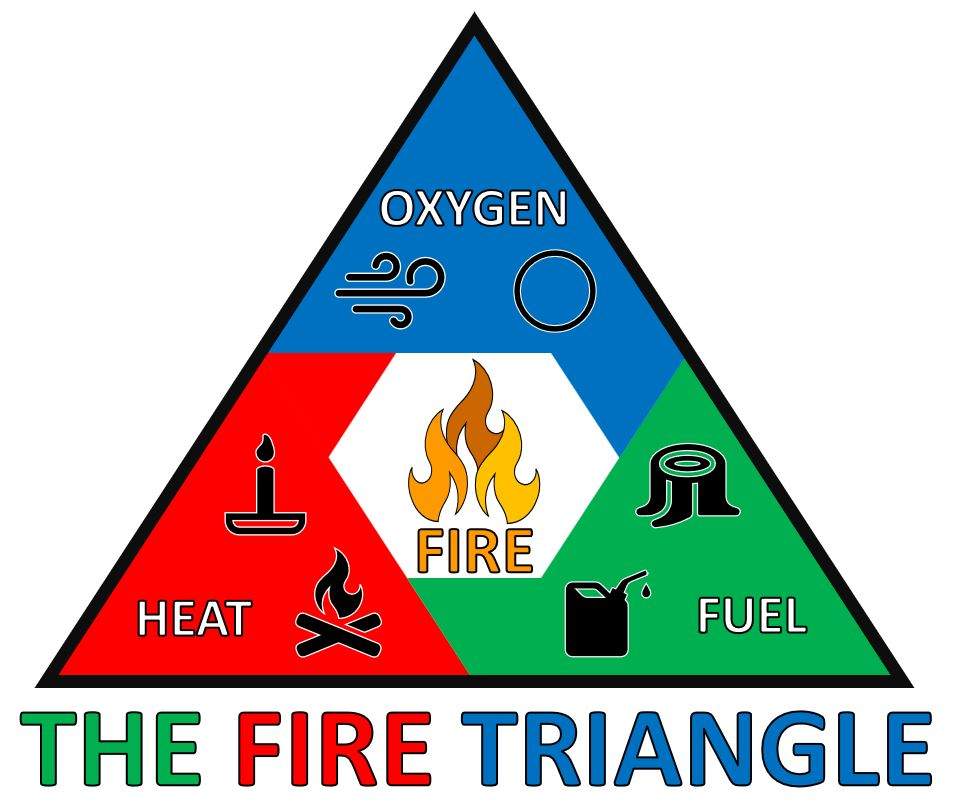
The 3 fire triangle elements it consists of are heat, oxygen and fuel. This is visualised in our fire triangle diagram above. If any one of these three components are not present, that a fire cannot start or continue. In fact, as we will see later, when it comes to extinguishing fires the methods generally used target stopping one or more of these three fire triangle elements.
To help explain each of the three fire triangle elements, we will now cover each one by one. Additionally to this, for more information about fire safety, see the HSE Fire Safety website.

Fire Triangle – Heat Element
The first fire triangle element is perhaps the most obvious, fires are obviously synonymous with heat and without that will not ignite or continue. Even a small spark, in the right conditions, can ignite a fire. Other ignition sources can include heaters, electrical equipment, cigarettes / cigars or any other naked flames or sparks.
If you are interested, we have an a separate guide to common electrical fires.
As combustible materials burn, heat is generated and clearly this this heat and combustion from flames can cause the fire to spread to other areas. As we mentioned in our Christmas fire safety guide, even a small flame from a candle can generate enough heat to start a fire on materials in proximity to it. Sources of heat can be found with thermal imaging devices such as thermal imaging inspection cameras.
One of the most common methods people think about when it comes to extinguishing fires is water, and water can it help to remove heat and extinguish flames in the right situation. Clearly, as anyone who has had fire training will know, water is not always the right solution to extinguish a fire (for example with an electrical fire other methods are more desirable and preferential).
In fact, in the wrong application, it can add more risk, especially examples like electricity and water! Speaking of risk, we discuss this in our article about air quality monitors.

Fire Triangle – Fuel Element
The second fire triangle element follows on from the previous one and is also something that people associate with fires. The second fire triangle element is fuel, which as we mentioned in the previous section, can be a combustible (or sometimes flammable) material.
When you think about it, when people start fires in their home fireplace or outdoors (deliberately that is), they will collect the materials for the fire which may include wood, paper or coal etc. This is often ignited with a match or firelighter and the fire builds. Fuel can obviously come in various different forms and doesn’t have to be a solid necessarily.
As we explained in our hazard symbols guide, liquids and gases can also be flammable and ignite. In fact, oftentimes (a) they can come together, like petrol and petrol fumes and (b) have a much more volatile reaction and ignite more quickly. In some situations, this may even be explosive.
On the subject of fuel, one of the areas where there have been great developments in recent years is in fireproof or fire retardant materials, there are also a number of safety standards associated with things such as household items, especially fabrics – for example, beds, mattresses, sofas, carpets etc. Other fuel sources could include paper, cardboard, plastics / foams or general waste too.
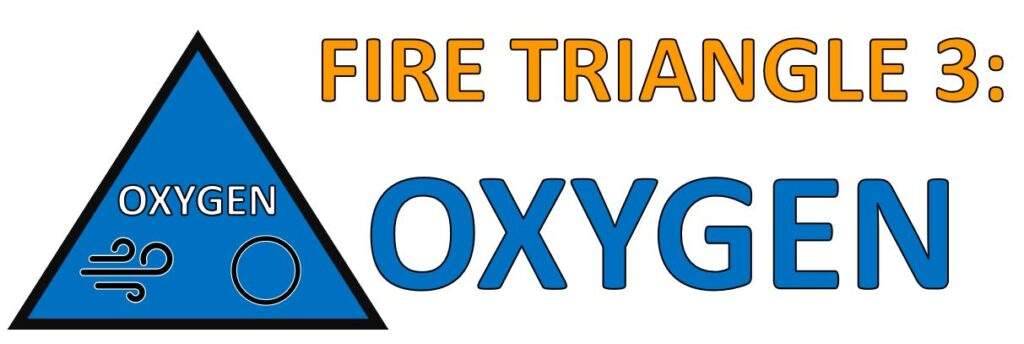
Fire Triangle – Oxygen Element
The third and final fire triangle element is perhaps the one people think of lost or are less familiar with, and that is oxygen (or an oxidiser / oxidisation). Even if you have heat and fuel, without oxygen a fire will not start or starve.
In fact, further to our comment earlier, some fire extinguishers (such as Carbon Dioxide C02) are designed to help starve a fire of oxygen. When a fire is burning, it uses up the oxygen and, in some situations, if there is not a fresh supply will slow and then extinguish. At a simple level, this is how a candle snuffer works.
Fire that is in a well-ventilated area, giving it a fresh supply of oxygen, is more likely to continue and spread, in a similar way the same can be said about the other 2 fire triangle elements. For example, when a fire runs out of fuel it stops too, unless it is reignited and the elements are reintroduced.
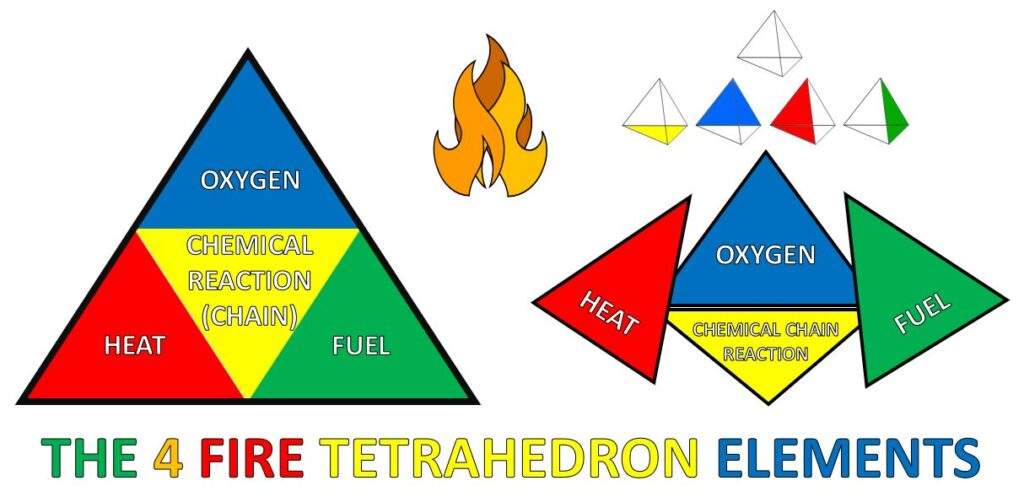
Fire Tetrahedron
Fire tetrahedrons extends the development of the 3 elements of fire triangle which you may also see. Basically, as you can see from our fire tetrahedron diagram above, it adds the 4th element on top of the fire triangle, namely chemical chain reactions. Combustion is an example of a chemical chain reaction. So therefore there are 4 elements of a fire tetrahedron.
Interestingly, a tetrahedron is a triangular pyramid, hence why it is sometimes known as a fire pyramid. This shape is not to be confused with a square based pyramid (like the pyramids in Egypt) which are technically known as pentahedron shaped!

The fire tetrahedron chemical reactions can be useful to understand fires relating to ‘non-conventional’ fires that would generally be less relevant in domestic situations, but especially relevant to commercial or industrial fires and fire risks. We talked about this more in our article about fire classifications, specififcally Class D fires involving combustible metals such as lithium.
Stopping chemical reactions can be a good way to stop fires spreading and causing more fire damage. Again, fire fighting methods and materials (including extinguishers) are designed to combat this effectively and efficiently.
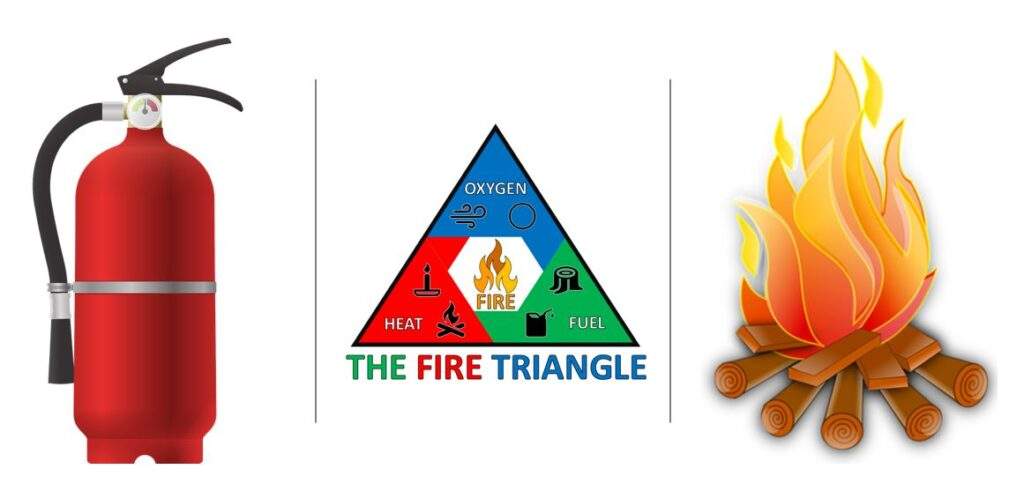
Fire Extinguishers and Fire Triangles
If you have ever had fire safety training, or done any research into fire extinguishers you will understand that (a) different types fire extinguisher are designed (or best) for specific type of fire. Also (b) that, in doing that, they can also help stop one or more of the 3 fire triangle elements.
Examples of fire extinguisher types include:
- Water fire extingishers
- Powder fire extinguishers
- Foam fire extinguishers
- CO2 (Carbon Dioxide) fire extinguishers
- Chemical fire extinguishers
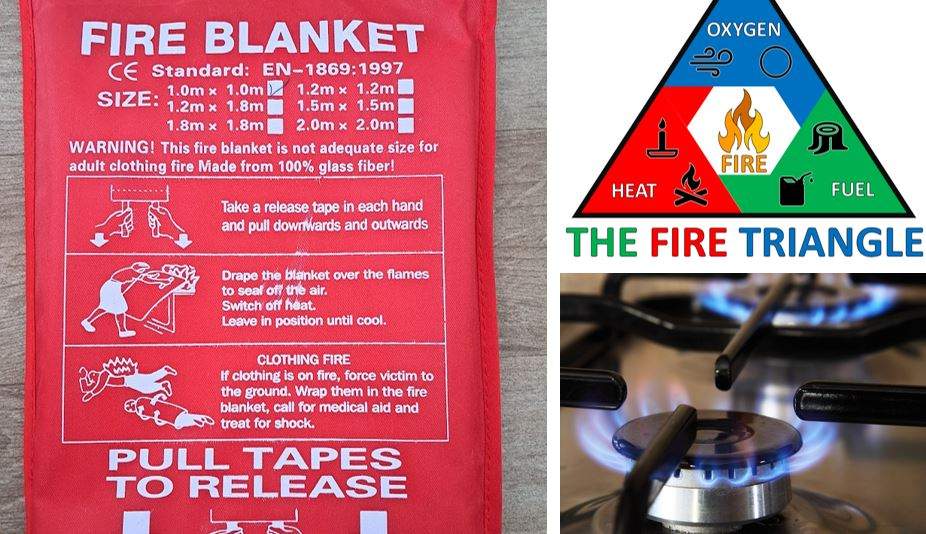
What Element of the Fire Triangle Does a Fire Blanket Remove?
Fire blankets can be a valuable asset when it comes to dealing with certain types of fire and they are common in kitchens and restaurants to deal with things like pan fires. But the question is, which of the 3 fire triangle elements does it help to stop? Primarily they help to supress the oxygen supply of the fire to help stop it.
On top of that, they can supress the flames and stop them spreading to other materials which could catch fire too, other fuel items that is. This is clearly a risk in an environment with cooking oils etc, especially as kitchen staff are likely to be in the vicinity too. Fire safety practices are very important in that environment.
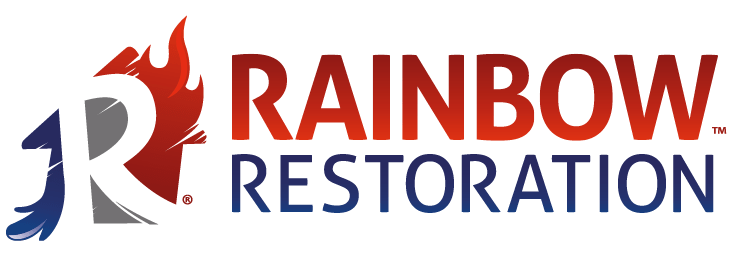
We really hope you found this guide to fire triangles and fire tetrahedrons useful and informative. As we said above, it is useful to know this about fires as it can help prevent, supress or stop them.
Here are some Fire Triangle FAQs:
What is the fire triangle in simple terms?
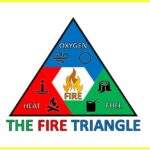
The fire triangle (sometimes known as the combustion triangle) is a useful tool to help understand the three elements required for a fire to exist. The three elements are – heat, fuel and oxygen. The fire triangle is sometimes supplemented by the fire tetrahedron, which includes the three items above as well as chemical chain reaction additionally. It is useful to understand these for fire safety.
What are the elements of the fire triangle UK?

The 3 elements fire triangle are – (1) heat, which can come from an ignition source like a flame (a match for example) or a spark too. Plus, some items will combust when they reach a high level of heat (2) fuel, the material which actually burns or catches fire when exposed to the other two elements (3) oxygen, to feed the fire. Without oxygen (or oxidiser) a flame or fire cannot survive.
How do you break the fire triangle?

In order to ‘break’ the fire triangle, you need to stop or supress one of the three elements of the fire triangle (heat, fuel and oxygen). Many fire fighting methods, including fire extinguishers are designed to tackle this (in the right application!). For example, water can remove heat and a Co2 (carbon dioxide) fire extinguisher can help to starve a fire of oxygen to help put the fire out.
If you have fire or smoke damage and want help and advice from our knowledgeable, friendly, experienced and local team – get in touch with us and and we will help and advise you.
We’re local experts in dealing with many types of challenging fire and flood restoration environments including crime scene cleaning York and the Yorkshire Coast area.
So if you need help with these, contact our friendly team to arrange for help and guidance. We also deal with water leaks in Yorkshire and, as you might expect leak detection in North Yorkshire homes and businesses, including water leak detection in York, which is where we are based.
At Rainbow Restoration – York & Yorkshire Coast we’re experts in Water Damage Restoration, so if you need help getting your property back to normal after a leak or flood, get in touch with our team.
